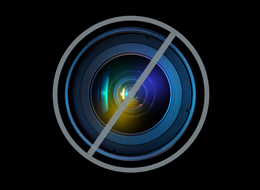
Richard A. Lovett
Updated March 8, 2012
A powerful sun storm—associated with the second biggest solar flare of the current 11-year sun cycle—is now hitting Earth, so far with few consequences. But the potentially "severe geomagnetic storm," in NASA's words, could disrupt power grids, radio communications, and GPS as well as spark dazzling auroras.
The storm expected Thursday, though, won't hold a candle to an 1859 space-weather event, scientists say—and it's a good thing too.
If a similar sun storm were to occur in the current day—as it well could—modern life could come to a standstill, they add.
As solar storms go, the two March 6 solar flares associated with Thursday's geomagnetic storm around Earth may not compare to the flares behind the 1859 storm. But, since the sun hasn't yet reached peak activity for this solar cycle, this week's outburst may be only a taste of flares to come.
"The sun has an activity cycle, much like hurricane season," Tom Bogdan, director of the U.S. Space Weather Prediction Center in Boulder, Colorado, said \at a meeting of the American Association for the Advancement of Science in Washington, D.C. in 2011.
After "hibernating for four or five years, not doing much of anything," the sun began waking up about a year ago. Even though the upcoming solar maximum may see a record low in the overall amount of activity, the individual events could be very powerful, Bogdan added.
In fact, the biggest solar storm on record—the 1859 blast—happened during a solar maximum about the same size as the one we're entering, according to NASA.
That storm has been dubbed the Carrington Event, after British astronomer Richard Carrington, who witnessed the megaflare and was the first to realize the link between activity on the sun and geomagnetic disturbances on Earth.
During the Carrington Event, northern lights were reported as far south as Cuba and Honolulu, while southern lights were seen as far north as Santiago, Chile. (See pictures of auroras generated by the Valentine's Day solar flare.)
The flares were so powerful that "people in the northeastern U.S. could read newspaper print just from the light of the aurora," Daniel Baker, of the University of Colorado's Laboratory for Atmospheric and Space Physics, said at a geophysics meeting in December 2010.
In addition, the geomagnetic disturbances were strong enough that U.S. telegraph operators reported sparks leaping from their equipment—some bad enough to set fires, said Ed Cliver, a space physicist at the U.S. Air Force Research Laboratory in Bedford, Massachusetts.
In 1859, such reports were mostly curiosities. But if something similar happened today, the world's high-tech infrastructure could grind to a halt.
"What's at stake," the Space Weather Prediction Center's Bogdan said, "are the advanced technologies that underlie virtually every aspect of our lives."
Solar Flare Would Rupture Earth's "Cyber Cocoon"
To begin with, the University of Colorado's Baker said, electrical disturbances as strong as those that took down telegraph machines—"the Internet of the era"—would be far more disruptive. (See "The Sun: Living With a Stormy Star" inNational Geographic magazine.)
Solar storms aimed at Earth come in three stages, not all of which occur in any given storm.
First, high-energy sunlight, mostly x-rays and ultraviolet light, ionizes Earth's upper atmosphere, interfering with radio communications. Next comes a radiation storm, potentially dangerous to unprotected astronauts.
Finally comes a coronal mass ejection, or CME, a slower moving cloud of charged particles that can take several days to reach Earth's atmosphere. When a CME hits, the solar particles can interact with Earth's magnetic field to produce powerful electromagnetic fluctuations. (Related: "Magnetic-Shield Cracks Found; Big Solar Storms Expected.")
"We live in a cyber cocoon enveloping the Earth," Baker said. "Imagine what the consequences might be."
Of particular concern are disruptions to global positioning systems (GPS), which have become ubiquitous in cell phones, airplanes, and automobiles, Baker said. A $13 billion business in 2003, the GPS industry is predicted to grow to nearly $1 trillion by 2017.
In addition, Baker said, satellite communications—also essential to many daily activities—would be at risk from solar storms.
"Every time you purchase a gallon of gas with your credit card, that's a satellite transaction," he said.
But the big fear is what might happen to the electrical grid, since power surges caused by solar particles could blow out giant transformers. Such transformers can take a long time to replace, especially if hundreds are destroyed at once, said Baker, who is a co-author of a National Research Council report on solar-storm risks.
The U.S. Air Force Research Laboratory's Cliver agrees: "They don't have a lot of these on the shelf," he said.
The eastern half of the U.S. is particularly vulnerable, because the power infrastructure is highly interconnected, so failures could easily cascade like chains of dominoes.
"Imagine large cities without power for a week, a month, or a year," Baker said. "The losses could be $1 to $2 trillion, and the effects could be felt for years."
Even if the latest solar maximum doesn't bring a Carrington-level event, smaller storms have been known to affect power and communications.
The "Halloween storms" of 2003, for instance, interfered with satellite communications, produced a brief power outage in Sweden, and lighted up the skies with ghostly auroras as far south as Florida and Texas.





